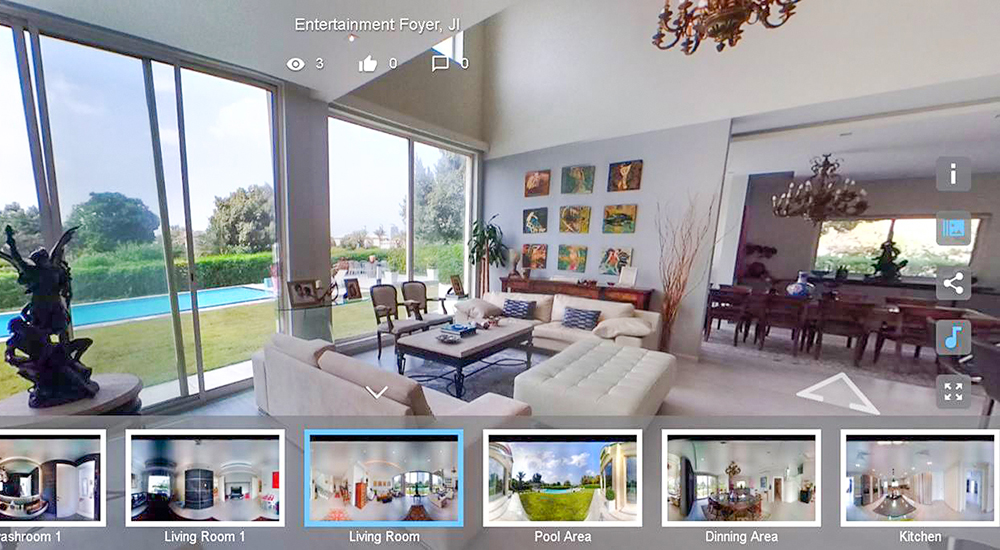A contract of lease describes particular legal responsibilities and rights in between property managers and tenants, consisting of payment terms, residential or commercial property use, and termination conditions.
- Lease types include fixed-term, month-to-month, and routine agreements, each providing various flexibility and period.
- Required provisions typically include down payment terms, maintenance obligations, lease control disclosures, and entry notification guidelines.
- State-specific requirements and federal guidelines may use to lease contracts.
- Customizing your lease to your residential or commercial property type and occupant scenario can assist avoid disputes.
Lease agreements, likewise called rental arrangements, are official documents that determine the lessor, lessee, and what's being rented, whether it's an asset or a residential or commercial property. Such contracts also information the length of a lease, rent cost, and conditions of the lease
Basics of a Lease Contract

A lease arrangement or agreement is a legally binding file and works whether you are an occupant, a roomie, a residential or commercial property manager, or a residential or commercial property owner. Creating a lease agreement at the start of a landlord-tenant relationship can minimize misunderstandings about the rental agreement. Lease agreements include information that covers such terms as:

- The length of a lease.
- The dates and terms of a lease renewal
- The charge or rent quantity
- Rent schedule and due dates for payments
- The address and name for sending payments
- Who's accountable for energies
- Tenant advantages, such as access to facilities
- Security deposit details
- Guest and family pet policies
- Penalties for late payments
- Early termination conditions and fees
- A residential or commercial property damage stipulation

Creating and printing a lease arrangement with these terms and conditions helps to minimize misunderstandings about who is accountable for what for the duration of a lease agreement. Make sure each party gets a copy of the lease to refer to.
Kinds Of Lease Contracts
There are a number of types of lease contracts, and picking the proper one depends upon the needs of both celebrations involved. The primary types consist of:
- Fixed-Term Lease: This agreement specifies a set duration (generally one year) throughout which the tenant accepts stay. Rent is fixed during this period, and neither celebration can alter the terms unless both agree.
- Month-to-Month Lease: This type renews monthly until either celebration offers proper notice to end. It offers flexibility, however lease and other terms may alter with each renewal.
- Periodic Tenancy: A lease that instantly restores for a specific period (e.g., month-to-month or weekly) unless ended. Notice requirements vary by state.
- Tenancy at Will: A more informal lease that can be terminated at any time by either party, usually with short notification.
- Sublease Agreement: Occurs when the initial tenant rent the residential or commercial property (or a portion of it) to another person. This generally requires property manager approval.
Understanding the various types assists ensure that your agreement of lease shows the desired duration and versatility.
Provisions in the Lease Contract
Specific details is required in the lease contract to ensure that the file covers all parties involved, for the factors of implementing liability.
Make sure to get the names of all tenants who are lawfully permitted to reside in the rental. That includes names of married or single couples, individuals, and roommates. Listing the names of renters makes them legally liable for all the terms laid out, consisting of payment of the lease completely every month and correct use of the unit and common locations. This allows a landlord to lawfully look for the entirety of the rent from any one of the renters when the others leave the system or are unable to pay. If several renters breach a regard to the contract, the property owner can terminate the lease for all occupants listed in the lease or rental contract.
Limiting tenancy is another provision that needs to be in the lease agreement. The agreement must specify that a rented system is the home just for those who have signed the lease and their minor kids. This lets the lessor identify who lives in the residential or commercial property as well as limiting the number of residents. It likewise allows the lessor to kick out a tenant who relocated his family, pals, and loved ones or sublets the system without an authorization.
The length of tenancy need to mention that it's a rental agreement or a fixed-term lease. A lease generally lasts a year. A landlord can set the lease to any length of time or choose versatile leasing terms.
Rental expense ought to be defined together with the due date and how it need to be paid. The majority of the time, lease is due on the 1st of on a monthly basis, with a short grace duration for those who might not be able to get to the office on the first day. Payment choices can likewise be laid out in the lease. Make certain to specify the types of payment techniques accepted, late costs if rent is not paid in a timely manner, the amount of the fee, and charges for a bounced rent check.
A lease should also specify whether animals are allowed, which types, weight limitations, and who is accountable for pet damage.
Legal Requirements and Disclosures in a Lease Contract
Depending on local and state laws, lease contracts may be required to include specific disclosures and legal provisions, including:
- Down Payment Limits and Return Policy: Some states top the amount a property manager might charge and require that it be returned within a certain period after tenancy ends.
- Lead-Based Paint Disclosure: Federally needed for residential or commercial properties constructed before 1978.
- Mold, Bed Bugs, or Pest Disclosure: Some jurisdictions need proprietors to reveal known threats.
- Notice Requirements for Entry: The lease must specify how much notice a proprietor need to provide before getting in the property-usually 24-48 hours.
- Rent Control and Stabilization Notices: In areas with lease control, landlords need to supply disclosures about relevant guidelines.
- Fair Housing Compliance: Leases should consist of non-discrimination stipulations in line with the Fair Housing Act.
Landlords and tenants should both understand these legal requirements to prevent fines or conflicts.

Landlord and Tenant Responsibilities Under a Basic Lease Contract
State and regional laws set obligations for both landlord and occupant. For example, a property manager needs to look after the residential or commercial property and make sure it is habitable, while a tenant pays lease and some or all of the utilities. As every home or apartment or condo is various, a generic lease agreement may not suit the needs of all lessors. Lessors should speak with an attorney to make certain their lease agreement pleases all regulations and secures them from any legal action produced by an occupant.
Customizing Lease Agreements by Residential Or Commercial Property Type

An agreement of lease can and ought to be customized based on the kind of residential or commercial property being rented and its designated usage. Here are a couple of examples:
- Residential Properties: May require stipulations regarding pet policies, parking projects, and use of typical areas.
- Commercial Properties: Often consist of terms about organization hours, signage, upkeep responsibilities, and insurance coverage requirements.
- Furnished Units: Should define which furnishings are consisted of and their condition at move-in.
- Multi-Tenant Buildings: Might need quiet hours or rules for shared facilities (e.g., laundry, health clubs).
- Short-Term or Vacation Rentals: Must clearly specify check-in/check-out policies, cleaning charges, and local lodging tax responsibilities.
By tailoring the lease contract to the particular circumstance, proprietors can decrease the probability of misconceptions and legal issues.
1. What is an agreement of lease? A contract of lease is a lawfully binding agreement in between a property owner and occupant that lays out terms for using residential or commercial property or properties in exchange for rent.
2. Can a lease contract be terminated early? Yes, however early termination terms should be specified in the lease. Breaking a lease without a legitimate reason may lead to charges.
3. Are lease contracts the exact same as rental agreements? Not precisely. A lease normally covers a fixed term (e.g., 12 months), while a rental agreement is usually month-to-month.
4. What occurs if a renter violates the lease? The property owner may provide a caution, charge costs, or start expulsion depending on the seriousness and the terms of the lease.
5. Do all lease contracts need to be in writing? While oral arrangements might stand sometimes, written lease contracts are constantly advised for clearness and legal enforceability.
If you require aid with lease agreements, you can post your legal requirement on UpCounsel's marketplace. UpCounsel accepts just the leading 5 percent of legal representatives to its website. Lawyers on UpCounsel come from law schools such as Harvard Law and Yale Law and average 14 years of legal experience, including work with or on behalf of companies like Google, Menlo Ventures, and Airbnb.








